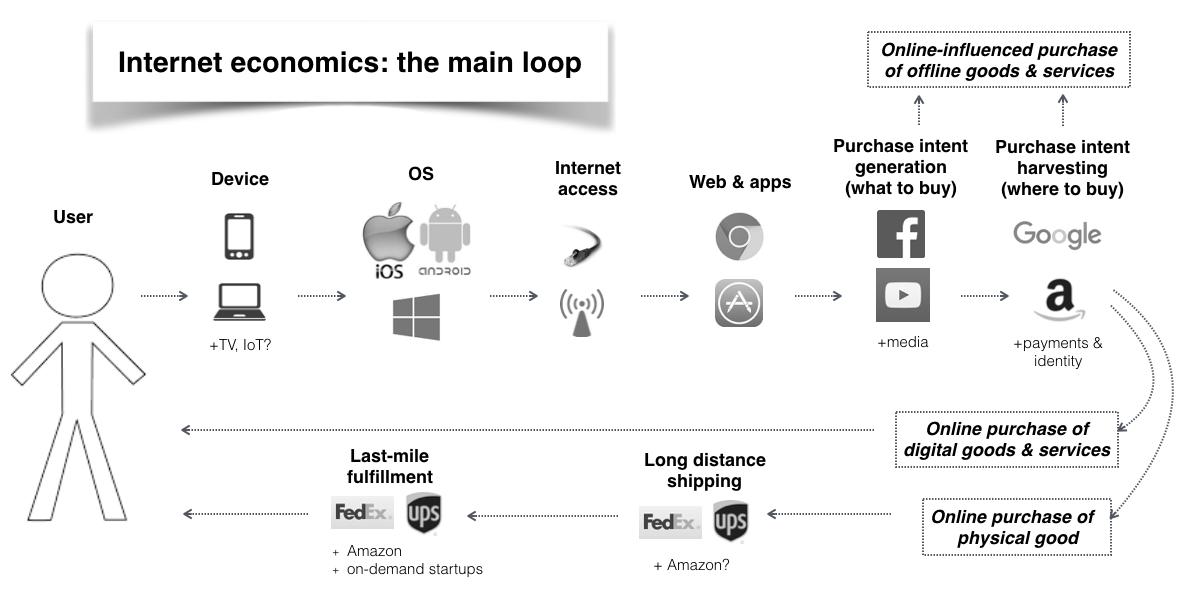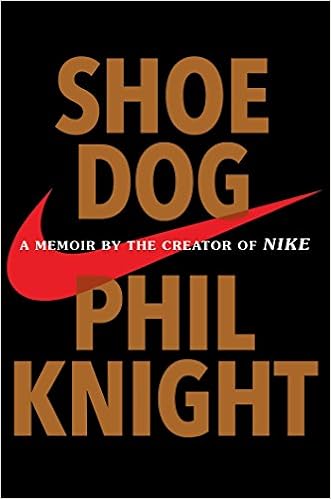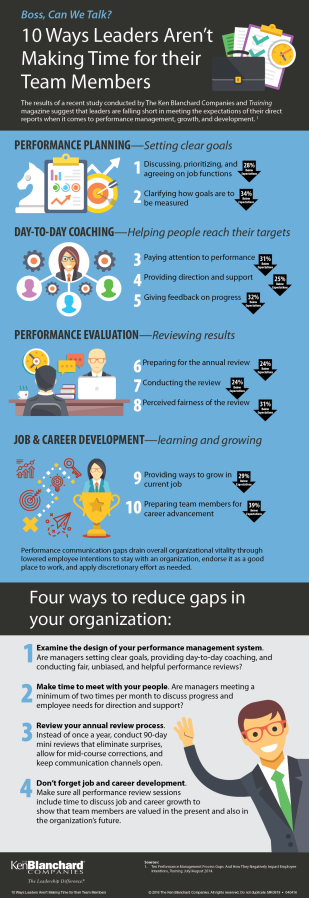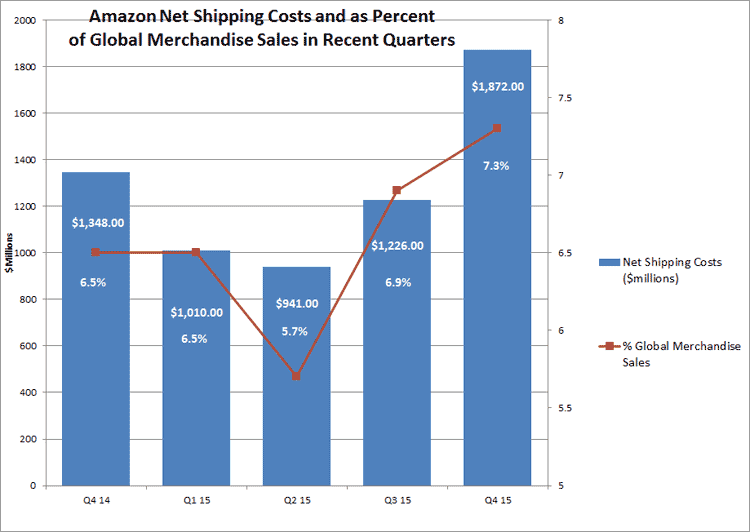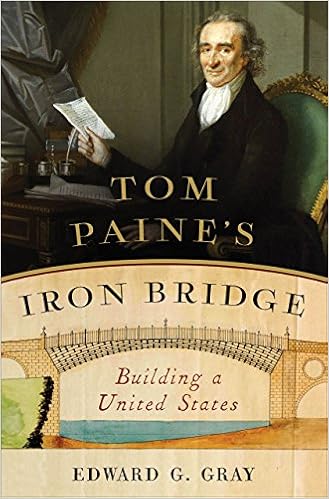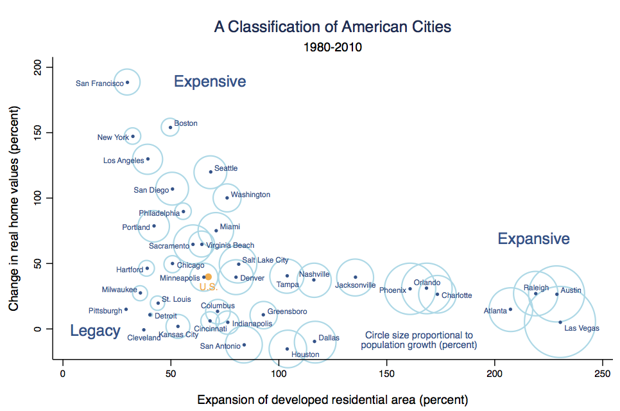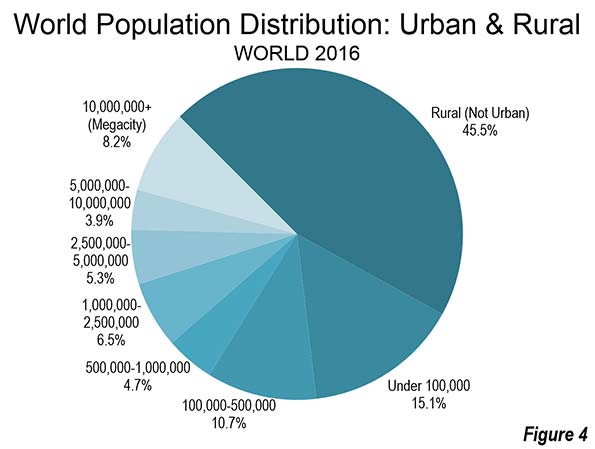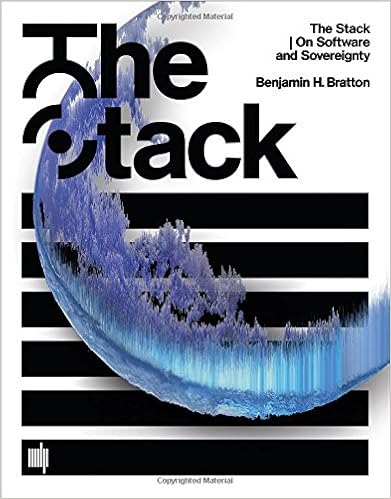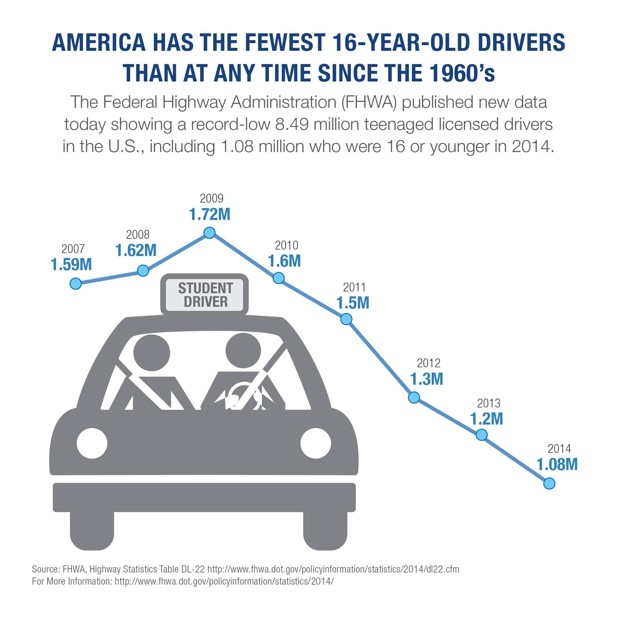Are Gen IV Nuclear Reactors the Future? - Power Engineering— Dr.Steven D.Sanders (@DocEngineering) April 30, 2016
https://t.co/BAtkOFl0RB
Saturday, April 30, 2016
Burns & McDonnell Talks Nuclear Reactors
Integral Urban Design
From the current issue of ENR:
"For designers, one of the biggest trends is that cities are taking a more holistic approach to urban development. This development is forcing designers to take a more integral approach to their own designs. “With these urban centers, the systems and communities continue to become more complex, requiring solutions that are collaborative and integrated in approach and require greater levels of technological innovation,” says Michael J. Carragher, CEO of VHB.
Further, the U.S. population is more willing to change jobs and locations and cities are being forced to sell themselves to potential and current residents, giving urban planners and designers a new source of business. For example, quality of life is becoming a competitive advantage for cities and their economic development efforts. Opportunities to live in a healthy environment are influencing what people want in their homes, workplaces, schools, public spaces and communities. “Public health is no longer solely the business of health professionals. There is a relationship between our built environment and our health,” says Ken Schwartz, senior vice president of VHB."
Rise of the Machines (and Biology)
From the New York Times:
"Half a century ago, harvesting California’s 2.2 million tons of tomatoes for ketchup required as many as 45,000 workers. In the 1960s, though, scientists and engineers at the University of California, Davis, developed an oblong tomato that lent itself to being machine-picked and an efficient mechanical harvester to do the job in one pass through a field."

"Half a century ago, harvesting California’s 2.2 million tons of tomatoes for ketchup required as many as 45,000 workers. In the 1960s, though, scientists and engineers at the University of California, Davis, developed an oblong tomato that lent itself to being machine-picked and an efficient mechanical harvester to do the job in one pass through a field."

Rebar Fact of the Day
How many Eiffel Towers? Chinese rebar trades defy measurement https://t.co/9VjPiHiTpT via @fastFT— Dr.Steven D.Sanders (@DocEngineering) April 30, 2016
Friday, April 29, 2016
A Paragraph to Ponder
From the Economist on the state of urban/suburban development:
"As it has done before, Florida is pioneering a new kind of city. Robert Bruegmann, an authority on urban sprawl at the University of Illinois, reckons that American city centres and suburbs are coming to resemble one another. Suburbs are growing denser and more diverse; urban cores are greener, cleaner and often less densely populated than they were (even go-go Manhattan has two-thirds as many people as it did a century ago). Ersatz city centres, which can be built in low-rise suburbs like Sunrise or in built-up areas, bulldoze the distinction further. South Florida is becoming a landscape of scattered centres—sprawl with bumps."
"As it has done before, Florida is pioneering a new kind of city. Robert Bruegmann, an authority on urban sprawl at the University of Illinois, reckons that American city centres and suburbs are coming to resemble one another. Suburbs are growing denser and more diverse; urban cores are greener, cleaner and often less densely populated than they were (even go-go Manhattan has two-thirds as many people as it did a century ago). Ersatz city centres, which can be built in low-rise suburbs like Sunrise or in built-up areas, bulldoze the distinction further. South Florida is becoming a landscape of scattered centres—sprawl with bumps."
The Incremental Development Alliance
Let's get incrementally better https://t.co/4HuqKEFEyn via @IncrementalDev— Dr.Steven D.Sanders (@DocEngineering) April 30, 2016
Thinking About New Ways to Produce Fertilizer
Lighting the way from dinitrogen to ammonia https://t.co/gvKpS80Nc0 via @cenmag— Dr.Steven D.Sanders (@DocEngineering) April 30, 2016
What Is Permissionless Innovation?
From Medium:
"In his book Permissionless Innovation: The Continuing Case for Comprehensive Technological Freedom, Adam Thierer explains that we stand poised to enjoy even bigger advancements in technology, but only if we preserve a hands-off, “permissionless” approach to innovation that has been applied to information technology in recent decades. In Thierer’s view, we are at the dawn of a new Industrial Revolution, one that has the potential to dramatically improve well-being.
The concept of permissionless innovation holds that “experimentation with new technologies and business models should generally be permitted by default.” It is contrary to the precautionary principle, which maintains that “new innovations should be curtailed or disallowed until their developers can prove that they will not cause any harms.” Permissionless Innovation expresses the belief that policymakers and the public should not only embrace permissionless innovation, but defend it unapologetically as it applies to existing as well as entirely new technologies. This approach is necessary to discourage further encroachment of the precautionary view, which Thierer believes is harmful."
What Are Innovation Districts?
The Rise of Innovation Districts: A New Geography of Innovation in America https://t.co/xMXHUiTPPG— Dr.Steven D.Sanders (@DocEngineering) April 29, 2016
Thursday, April 28, 2016
Update on the COAST Act
Cornyn Files Bill to Speed Hurricane Study https://t.co/3FLa7AUqJz via @TexasTribune— Dr.Steven D.Sanders (@DocEngineering) April 28, 2016
Potholes versus Public Sector Pensions in the Age of Lower Expectations
Why investors may need to lower their sights | McKinsey & Company https://t.co/uXiGpSmyVz— Dr.Steven D.Sanders (@DocEngineering) April 28, 2016
The Future of Maintenance - Smart Glasses
Augmented reality: Here’s looking at you https://t.co/1hBvoGi5VN via @TheEconomist— Dr.Steven D.Sanders (@DocEngineering) April 28, 2016
Wednesday, April 27, 2016
The New Normal
Automated cars could be the new norm https://t.co/WNAlCh0MXy via @mndailynews— Dr.Steven D.Sanders (@DocEngineering) April 28, 2016
The Reverse Mentor
From the Construction Junkie:
"The example that I’m going to highlight is a story written by Casey Logan, of News-Press, in which a construction company, Suffolk Construction (based throughout the United States), has paired an experienced, 66-year-old, not-so-tech-saavy superintendent with an inexperienced, 30-year-old, tech saavy assistant project manager. That’s the combination that nightmares are made of, right? Not for Suffolk. The company has chosen to embrace their differences and encourage each of them to learn new skills from each other, instead of just one of them learning. Butch Shull, the superintendent, teaches Nico Zepp, the assistant project manager, skills like project sequencing and job site safety, while Zepp teaches Shull how to use technology to harness Suffolk’s “build smart” approach. “Build smart” is the company’s commitment to using the latest technologies to gain a competitive advantage, such as virtual models, lean construction, and BIM."
"The example that I’m going to highlight is a story written by Casey Logan, of News-Press, in which a construction company, Suffolk Construction (based throughout the United States), has paired an experienced, 66-year-old, not-so-tech-saavy superintendent with an inexperienced, 30-year-old, tech saavy assistant project manager. That’s the combination that nightmares are made of, right? Not for Suffolk. The company has chosen to embrace their differences and encourage each of them to learn new skills from each other, instead of just one of them learning. Butch Shull, the superintendent, teaches Nico Zepp, the assistant project manager, skills like project sequencing and job site safety, while Zepp teaches Shull how to use technology to harness Suffolk’s “build smart” approach. “Build smart” is the company’s commitment to using the latest technologies to gain a competitive advantage, such as virtual models, lean construction, and BIM."
An Engineer Looks at Technology Stagnation in Graphs
No Great Technological Stagnation https://t.co/nDt09n9Lef via @wordpressdotcom— Dr.Steven D.Sanders (@DocEngineering) April 27, 2016
No Stagnation in Traffic Lights
German city installs traffic lights in pavements to protect texting pedestrians | via @telegraphtech https://t.co/YZC59cNdrP— Dr.Steven D.Sanders (@DocEngineering) April 27, 2016
The Service Academies - The Best of Engineering and the Hummanities
From the Washington Post by Nick Anderson - - Service Academies: Where the U.S. Military Meets Liberal Arts:
"Students come to West Point, Annapolis and Colorado Springs in quest of an officer’s commission and a bachelor’s degree. Many cadets and midshipmen gravitate toward majors in science or engineering.
But the nation’s service academies also want these future officers to learn something about the human condition.
“We want people to think critically,” said Lt. Gen. Michelle D. Johnson, superintendent of the U.S. Air Force Academy. “I find myself being a champion of the humanities.”
“Our vision is to be the preeminent leadership development institute in the world,” said Lt. Gen. Robert L. Caslen Jr., superintendent of the U.S. Military Academy. That means learning about character, he said. “If you fail in character, you fail in leadership.”"
"Students come to West Point, Annapolis and Colorado Springs in quest of an officer’s commission and a bachelor’s degree. Many cadets and midshipmen gravitate toward majors in science or engineering.
But the nation’s service academies also want these future officers to learn something about the human condition.
“We want people to think critically,” said Lt. Gen. Michelle D. Johnson, superintendent of the U.S. Air Force Academy. “I find myself being a champion of the humanities.”
“Our vision is to be the preeminent leadership development institute in the world,” said Lt. Gen. Robert L. Caslen Jr., superintendent of the U.S. Military Academy. That means learning about character, he said. “If you fail in character, you fail in leadership.”"
Tuesday, April 26, 2016
Watching 200-Years of US Immigration
Watch how immigration in America has changed in the last 200 years https://t.co/1ePtGjORWP via @voxdotcom— Dr.Steven D.Sanders (@DocEngineering) April 27, 2016
Going From Introverted Engineer to CEO - The Recommended Reading List
Stephane Kasriel is the CEO of Upwork - a firm that matches freelancers with employers. He has an article in the current issue of Harvard Business Review - How I Did It: Upwork's CEO on How an Introverted Engineer Learned to Lead. The article is fascinating in describing his journey. Mr. Kasriel read widely along the path to CEO - he cited the following books that he read in preparing for his leadership role.
- Anticipate:The Architecture of Small Team Innovation and Product Success by Ronald Brown
- The Charisma Myth: How Anyone Can Master the Art and Science of Personal Magnetism by Olivia Fox Cabane
- Continuous Delivery: Reliable Software Releases Through Build, Test, and Deployment Automation by Jez Humble and David Farley
- Customer Centric Selling by Michael Bosworth and John Holland
- The Four Steps to the Epiphany: Successful Strategies for Products That Win by Steve Blank
- Getting Things Done: The Art of Stress-Free Productivity by David Allen
- The Hard Thing About Hard Things: Building a Business When There Are No Easy Answers by Ben Horowitz
- Hooked: How to Build Habit-Forming Products by Nir Eyal and Ryan Hoover
- How Google Works by Eric Schmidt and Jonathan Rosenberg
- Inspired: How to Create Products Customers Love by Marty Cagan
- Jack: Straight from the Gut by Jack Welch and John Byrne
- Lean Enterprise: How High Performance Organizations Innovate at Scale by Jez Humble, Joanne Molesky, and Barry O'Reilly
- Made to Stick: Why Some Ideas Survive and Others Die by Chip Heath and Dan Heath
- The New Strategic Selling: The Unique Sales System Proven Successful by the World's Best Companies by Robert Miller, Stephen Heiman, and Tao Tuleja
- Predictable Revenue: Turn Your Business Into a Sales Machine with $100 Million Best Practices of Salesforce.com by Aaron Ross and Marylou Tyler
- Rework by Jason Freid and David Heinemeier Hansson
- Steve Jobs by Walter Isaacson
- Super Crunchers: Why Thinking-by-Numbers is the New Way to be Smart by Ian Ayres
- Thinking Strategically: The Competitive Edge in Business, Politics, and Everyday Life by Avinash Dixit and Barry Nalebuff
- Zero to One: Notes on Startups, or How to Build the Future by Peter Thiel and Blake Masters
Monday, April 25, 2016
Sustainability Predictions for 2050
Adapting to Adaptation: A Roadmap to How We Will Live in 2050 https://t.co/kCcBfy8R5A— Dr.Steven D.Sanders (@DocEngineering) April 26, 2016
Psychological Analysis is Coming to CRM and Advertising
Cruz campaign credits psychological data and analytics for its rising success https://t.co/TxY4ppV3jI— Dr.Steven D.Sanders (@DocEngineering) April 26, 2016
No-Cal versus So-Cal
From Richard Florida (the expert on all things urban+economic+geography) in CityLab today on the why SF has outperformed LA:
"This is where the physical planning leaves off and the human infrastructure of the reg"on becomes critical. What L.A. lacked as the New Economy came into being was the interconnections between different groups that would have allowed it to transform its pre-existing skills and organizations into New Economy industries. Even though L.A. had amazing technology endowments going into the New Economy, the existing firms were not pushed to do technology differently. They stayed with their old client, the Defense Department, and with making elaborate big technology systems (some of the best in the world)."
"This is where the physical planning leaves off and the human infrastructure of the reg"on becomes critical. What L.A. lacked as the New Economy came into being was the interconnections between different groups that would have allowed it to transform its pre-existing skills and organizations into New Economy industries. Even though L.A. had amazing technology endowments going into the New Economy, the existing firms were not pushed to do technology differently. They stayed with their old client, the Defense Department, and with making elaborate big technology systems (some of the best in the world)."
VR Comes to Retail
INC magazine article on IKEA's VR efforts. The utilization of VR will take many paths - - but success at IKEA might mean greater utilization of VR in engineering, manufacturing, construction, and maintenance in the near future. The VR solution space will need the integrators - - the engineers that can pull multiple streams of knowledge and innovation from across multiple industry barriers.
DC Metro and the Challenges of the Maintainers
Metro sank into crisis despite decades of warnings https://t.co/RC76NDj17k— Dr.Steven D.Sanders (@DocEngineering) April 25, 2016
International Malaria Day
Winning the fight against malaria | McKinsey & Company https://t.co/gvGvwjsANx— Dr.Steven D.Sanders (@DocEngineering) April 25, 2016
Sunday, April 24, 2016
What Is a Chatbot?
“The Complete Beginner’s Guide To Chatbots” by @MattPRD https://t.co/PFMQrLDv4S— Dr.Steven D.Sanders (@DocEngineering) April 24, 2016
A Paragraph to Ponder
From Bloomberg:
"The Group-of-Seven agriculture ministers meet in Japan’s northern prefecture of Niigata this weekend for the first time in seven years to discuss how to meet increasing food demand as aging farmers retire without successors. With the average age of Japanese farmers now 67, Agriculture Minister Hiroshi Moriyama will outline his idea of replacing retiring growers with Japanese-developed autonomous tractors and backpack-carried robots."
"The Group-of-Seven agriculture ministers meet in Japan’s northern prefecture of Niigata this weekend for the first time in seven years to discuss how to meet increasing food demand as aging farmers retire without successors. With the average age of Japanese farmers now 67, Agriculture Minister Hiroshi Moriyama will outline his idea of replacing retiring growers with Japanese-developed autonomous tractors and backpack-carried robots."
Engineering and the Rise of Mostly-Autonomous Systems
The rise of mostly-autonomous systems https://t.co/5GhSmJkQrA via @wordpressdotcom— Dr.Steven D.Sanders (@DocEngineering) April 24, 2016
City of Dallas - Resilient City
The City of Dallas is moving down the path of thinking about resiliency. More cities and communities need to be thinking about the issue of resiliency - especially in the context of sustainability.
I participated in a day long workshop last Thursday. We divided into table groups to discuss the foundation concepts of resiliency. One exercise had us discuss and vote on the top risks that the City of Dallas faces in the future. The risks were pre-identified for the group - - ten risks ranging from infrastructure failure to climate change to poverty to education to income inequality. When you looked at the list it was interesting that our plots regarding the future have a starting point with our fears in the present. It will be interesting to see if this turns out to be a good way to think about future risks.
Link to Dallas' resilience challenge.
I participated in a day long workshop last Thursday. We divided into table groups to discuss the foundation concepts of resiliency. One exercise had us discuss and vote on the top risks that the City of Dallas faces in the future. The risks were pre-identified for the group - - ten risks ranging from infrastructure failure to climate change to poverty to education to income inequality. When you looked at the list it was interesting that our plots regarding the future have a starting point with our fears in the present. It will be interesting to see if this turns out to be a good way to think about future risks.
Link to Dallas' resilience challenge.
Good Example Of Teaching Leadership
Practical Leadership https://t.co/7mXQ75b0Xw via @mitocw— Dr.Steven D.Sanders (@DocEngineering) April 24, 2016
New to the Book Pile
In my current stack - -
- Into The Black - Rowland White
- America's War for the Greater Middle East - Andrew Bacevich
- Negotiating the Nonnegotiable: How to Resolve Your Most Emotionally Charged Conflicts - Daniel Shapiro
- Mission Failure: America and the World in the Post-War Era - Michael Mandelbaum
- Connectography: Mapping the Future of Global Civilization - Parag Khanna
- Far & Away: Reporting from the Brink of Change / Seven Continents, Twenty-Five Years - Andrew Solomon
- Mastra - L.S. Hilton
Saturday, April 23, 2016
Professor Pothole
Professor Pothole https://t.co/9yiGKyzfB8 via @NickPaumgarten— Dr.Steven D.Sanders (@DocEngineering) April 24, 2016
Great Engineering Assignment
Below is the assignment in the context of an economics class. You could flip the assignment toward the Secretary of Transportation who is testifying before the House Transportation and Infrastructure Committee and your boss is a Congressman on the committee.
"Imagine that you are a staff member working for a member of Congress who sits on the Joint Economic Committee (JEC). Fed Chair Janet Yellen is about to testify before the JEC and you are assigned to write a three-page memo to prepare your boss—the member of Congress. You are to focus on economics. This is not a political question and you should assume for this assignment that the member of Congress you work for is interested in economics and not politics.
The first part of this assignment is for you to provide your boss with a concise briefing on the state of the U.S. economy, focusing on the aspects of the economy that are relevant for the decision facing Chair Yellen. The second part of the assignment is for you to write a question that your boss will ask Chair Yellen, and then explain to the member of Congress the information that the question is intended to elicit from the Fed chair. You can split the three pages however you wish between the questions."
Source of the assignment idea
Allah and a 1,000% Increase in Your Water Bill
The unaffordable, exorbitant water bills https://t.co/nIMiHMkpje via @saudi_gazette— Dr.Steven D.Sanders (@DocEngineering) April 23, 2016
Update on My Son's Construction Project in NYC
These Luxury Towers Have A Bridge In The Sky—With a Pool In It https://t.co/S1UzjcKzWI via @luxury— Dr.Steven D.Sanders (@DocEngineering) April 23, 2016
Mapping Our Self-Driving Future
From an article in Vox regarding our projected mapping efforts:
"Creating detailed and comprehensive maps is difficult in the sense that it takes a lot of work, but it's not a hard technical problem. Google has already done it for roads around their corporate headquarters in Mountain View and some of its competitors likely already have the same capabilities. Expanding these maps nationally doesn't require a conceptual breakthrough, it just takes money — and Google has a lot of money.
We can expect Google and its rivals to start their mapping projects in major cities where the bulk of Americans live. That means that most of us are likely to get access to door-to-door self-driving car service long before the last mile of rural American roads has been mapped."
Engineering Versus the Power of Precedent
The Simplest Way to Avoid Bad Street Design: Copy the Ones That Work https://t.co/IeJIsHpIzU— Dr.Steven D.Sanders (@DocEngineering) April 23, 2016
Engineering Bridges to Everywhere

From the new book by Parag Khanna - Connectography: Mapping the Future of Global Civilization:
"Connectivity is the the new meta-pattern of our age. Like liberty or capitalism, it is a world-historical idea, one that gestates, spreads, and transforms over a long timescale and brings about epochal changes. Despite the acute unpredictability that afflicts our world today, we can be adequately certain of current mega-trends such as rapid urbanization and ubiquitous technology. Every day, for the first time in their lives, millions of people switch on mobile phones, log on to the web, move into cities, or fly on an airplane. We go where opportunity and technology allow. Connectivity is thus more that a tool; it is an impulse.
No matter which way we connect, we do so through infrastructure. While the word "infrastructure" is less than a century old, it represents nothing less than our physical capacity for global interaction. Engineering advances have made new infrastructure possible that were dreams of previous generations. Over a century ago, crucial geographic interventions such as the Suez and Panama Canals reshaped global navigation and trade. Since the nineteenth century, Ottoman sultans aspired to construct a tunnel that would connect Istanbul's European and Asian sides. Now Turkey has both the Marmaray tunnel that opened in 2013 and freight railways and oil and gas pipelines that are strengthening its position as a key corridor between Europe and China. Turkey has been called the country where continents collide; now it is the country where continents connect. The early twentieth-century Japanese emperor Taisho also sought to link Honshu and northern Hokkaido Island, but only in the 1980s did it complete the Seikan Tunnel, which traverses fifty-four kilometers (including twenty-three kilometers under the seabed) and carries Shinkansen high-speed trains. Once the tunnels to Sakhalin and South Korea are complete, Japan won't truly be an island anymore.
We are in only the early phase of reengineering the planet to facilitate surging flows of people, commodities, goods, data, and capital. Indeed, the new wave of transcontinental and intercontinental mega-infrastructure is even more ambitious; an interoceanic highway across the Amazon from Sao Paulo to Peru's Pacific port of San Juan de Marcona, bridges connecting Arabia to Africa, a tunnel from Siberia to Alaska, polar submarine cables on the Arctic seabed from London to Tokyo, and electricity grids transferring Saharan solar power under the Mediterranean to Europe. Britain's exclave of Gibraltar will be the mouth of a tunnel under the Mediterranean to Tangier in Morocco, from which a new high-speed rail extends down the coast to Casablanca. Even where continents are not physically attaching to each, ports and airports are expanding to absorb the massive increase in cross-continental flows."
Friday, April 22, 2016
Gene Therapy - Wanting to Watch Super Bowl MMC
First gene therapy successful against human aging https://t.co/Gy347izzaJ— Dr.Steven D.Sanders (@DocEngineering) April 23, 2016
Confusing Innovation With Technology
From the Arup Connectivity column:
"Designers also need to think broadly about innovation and not confuse it with mere technology. Innovation can take many forms, from products to processes to behaviours and new ways of working. To truly achieve innovation in infrastructure projects, clients, designers and delivery teams need to start thinking creatively at the concept stage, implement and embed innovation systematically by bringing in good ideas - whatever the source may be - at all stages of the project lifecycle.
What we learn from the Crossrail example is that true innovation requires a strategic commitment, proper financial support and an approach based on openness and collaboration. A common brake on innovation is the fear that there won’t be a return on investment: why share your best ideas if there’s no opportunity to capitalise on them in the future? But when a ‘risk and reward’ sharing approach is supported at the highest levels from the outset, developing new ideas becomes embedded in everyone’s attitude to the benefit of the project, its client and ultimately the end-user.
Good ideas should travel, and when designers deliver exemplar projects featuring innovation in all stages through to construction, they need to promote them widely among their clients and peers. Only by sharing success stories and understanding that people and culture are instrumental to bringing about the change and are at the heart of innovation, will the industry increase its adoption of innovation and turn a buzz word into something real."
Moving Toward Marketing AI
Five Ways AI Will Impact Marketing Over the Next 12 Months— Dr.Steven D.Sanders (@DocEngineering) April 23, 2016
https://t.co/0TjubcoBmM
Construction Buys Into Drones
Construction Accounts for Nearly Half of Drone Flight Exceptions, States Drone Study: A new drone report sheds light on the type of industries that are using drones most and the drone manufacturers who are getting ahead.
A Paragraph to Ponder
From ENR on the management and risks of megaprojects:
"“If you can avoid going big, do it, because it’s the most efficient way to avoid risk,” says Bent Flyvbjerg, professor of major program management at Oxford's Saïd Business School and co-author of Big is Fragile: An Attempt at Theorizing Scale, to be published by the university. The better option is “to have big projects that are a combination of small projects,” he adds."
"“If you can avoid going big, do it, because it’s the most efficient way to avoid risk,” says Bent Flyvbjerg, professor of major program management at Oxford's Saïd Business School and co-author of Big is Fragile: An Attempt at Theorizing Scale, to be published by the university. The better option is “to have big projects that are a combination of small projects,” he adds."
Thursday, April 21, 2016
Tuesday, April 19, 2016
The Robert Moses Infrastructure Game Design Challenge
“‘The Power Broker’: A Game Design Competition” by @timhwang https://t.co/Cl1Fn4xsVk— Dr.Steven D.Sanders (@DocEngineering) April 19, 2016
PurePredictive
AI, Automation and Super Models: we've launched our predictive platform! https://t.co/IM7s5zOpf2 #lifeissweet #thanksbetas #ipredictsuccess— PurePredictive (@PurePredictive) March 16, 2016
Monday, April 18, 2016
The Mystery Engineer - - TopGolf's CEO Erik Anderson
From TopGolf's website -
"From 1998-2002, Erik served as CEO of Matthew G Norton Co., a private investment company. In addition, his experience includes tenures at the private equity firm of Frazier & Company, LP, and Vice President at Goldman, Sachs & Co. He holds a master’s and bachelor’s degree in Industrial Engineering from Stanford University and a bachelor’s degree (Cum Laude) in Management Engineering from Claremont McKenna College."

"From 1998-2002, Erik served as CEO of Matthew G Norton Co., a private investment company. In addition, his experience includes tenures at the private equity firm of Frazier & Company, LP, and Vice President at Goldman, Sachs & Co. He holds a master’s and bachelor’s degree in Industrial Engineering from Stanford University and a bachelor’s degree (Cum Laude) in Management Engineering from Claremont McKenna College."

Solar Power - Engineering to a Unit Cost
From Vox:
"How cheap? Sivaram and Kann argue that the industry should set a goal of pushing the installed price of solar to 25 cents per watt by 2050 — down from around $3 per watt today. That's a mind-bogglingly low number, and it could require thinking about solar innovation in a radically new way. The industry's current approach to cutting costs might not get us there. We may need experimental new technologies. Or novel ways of integrating solar into our walls and windows. Or robot installers."
"How cheap? Sivaram and Kann argue that the industry should set a goal of pushing the installed price of solar to 25 cents per watt by 2050 — down from around $3 per watt today. That's a mind-bogglingly low number, and it could require thinking about solar innovation in a radically new way. The industry's current approach to cutting costs might not get us there. We may need experimental new technologies. Or novel ways of integrating solar into our walls and windows. Or robot installers."
Sunday, April 17, 2016
Arup Thinks About Your Robotic Co-Worker
Arup | Thoughts | Can you imagine having a robotic co-worker? https://t.co/uY0b1vYO7g— Dr.Steven D.Sanders (@DocEngineering) April 18, 2016
Do We Have Five Years to Think About Infrastructure Resiliency?
Texans in Congress Largely Silent on Hurricane Protection https://t.co/VuufGpBSkq via @TexasTribune— Dr.Steven D.Sanders (@DocEngineering) April 18, 2016
Engineering Biofactories for Tomorrow
Living factories of the future https://t.co/lM4IZNQHSA— Dr.Steven D.Sanders (@DocEngineering) April 17, 2016
Saturday, April 16, 2016
Not Re-engineering Akron Ohio
From the Wall Street Journal - - a book review of The Smartest Places on Earth by Antoine van Agtmael and Fred Bakker. The review was written by Marc Levinson.
"I have no reason to doubt that Akron has become a hub of innovation in polymers. But in their enthusiasm for Akron's comeback story, the authors gloss over some facts. The population of Summit County, of which Akron is the seat, has barely changed in two decades. The statistics show no influx of brainy young innovators. The county has aged faster than the country as a whole since 2000, and its median age, 40.6 years, is three years above the U.S. average. While a small number of scientific and technical jobs have been added, total employment peaked nearly a decade ago, and wages remain below the national average. In short, after 15 years the economic benefit of becoming a "brainbelt" seems to be limited."
"I have no reason to doubt that Akron has become a hub of innovation in polymers. But in their enthusiasm for Akron's comeback story, the authors gloss over some facts. The population of Summit County, of which Akron is the seat, has barely changed in two decades. The statistics show no influx of brainy young innovators. The county has aged faster than the country as a whole since 2000, and its median age, 40.6 years, is three years above the U.S. average. While a small number of scientific and technical jobs have been added, total employment peaked nearly a decade ago, and wages remain below the national average. In short, after 15 years the economic benefit of becoming a "brainbelt" seems to be limited."
Friday, April 15, 2016
The Urban Corridors - A New Map of America
A New Map for America https://t.co/Add2Ivku50— Dr.Steven D.Sanders (@DocEngineering) April 15, 2016
How Will Technology Change Cities?
5 Technologies That Will Change Cities Forever https://t.co/AqeoKbdKW7— Dr.Steven D.Sanders (@DocEngineering) April 15, 2016
New Economist 1843 Periodical
If New York’s Lowline gets the green light, it could be the world’s first underground park https://t.co/mlsSc7VwTf pic.twitter.com/ESCb1t4ng2— 1843 magazine (@1843mag) April 11, 2016
Thursday, April 14, 2016
Problems In the Outhouse
From the Schumpeter column in the Economist - Keeping It Under Your Hat - - moving from the "out" house and pulling resources and capabilities back in house:
"Reasons for the reversal abound, but five stand out. The most important is simplicity. Consumers are willing to pay a premium for well-integrated products that do not force them to deal with different suppliers or land them with components that do not talk to each other. They want to be able simply to press a button and let the machine do the rest. This is largely why Apple opted for integration, as did Nest, a maker of wireless thermostats.
A second reason is that firms operating on the technological frontier often find it more efficient to do things in-house. Companies that are inventing the future frequently have no choice but to pour money into new ventures rather than buy components off the shelf. This explains Tesla’s “gigafactory” for batteries: their availability is the biggest constraint on the firm’s growth. Boeing tried to cut its production costs by outsourcing 70% of the production of its 787 Dreamliner to hundreds of different suppliers—more than any airliner before. The result was a disaster: parts came in late; bits didn’t fit together; deadlines were missed. The firm reversed course, bringing manufacturing back in house and buying a factory.
A third reason is choice: the more the market has to offer, the more important it is to build a relationship with customers. Netflix and Amazon now create their own television shows in order to keep their viewers from buying more generic content elsewhere. Harry’s, an American company that sends its subscribers a regular supply of razors and shaving cream, spent $100m to buy a German razor-blade factory."

"Reasons for the reversal abound, but five stand out. The most important is simplicity. Consumers are willing to pay a premium for well-integrated products that do not force them to deal with different suppliers or land them with components that do not talk to each other. They want to be able simply to press a button and let the machine do the rest. This is largely why Apple opted for integration, as did Nest, a maker of wireless thermostats.
A second reason is that firms operating on the technological frontier often find it more efficient to do things in-house. Companies that are inventing the future frequently have no choice but to pour money into new ventures rather than buy components off the shelf. This explains Tesla’s “gigafactory” for batteries: their availability is the biggest constraint on the firm’s growth. Boeing tried to cut its production costs by outsourcing 70% of the production of its 787 Dreamliner to hundreds of different suppliers—more than any airliner before. The result was a disaster: parts came in late; bits didn’t fit together; deadlines were missed. The firm reversed course, bringing manufacturing back in house and buying a factory.
A third reason is choice: the more the market has to offer, the more important it is to build a relationship with customers. Netflix and Amazon now create their own television shows in order to keep their viewers from buying more generic content elsewhere. Harry’s, an American company that sends its subscribers a regular supply of razors and shaving cream, spent $100m to buy a German razor-blade factory."
Ranking Female Billionaires
Total Wealth of Female Billionaires— ian bremmer (@ianbremmer) April 12, 2016
1 China $95.4B
2 US 28.8
3 UK 4.9
4 Spain 4.6
5 Italy 2.4
5 Nigeria 2.4
7 Australia 1.8
8 Brazil 1.4
How Big Data and Performance Analytics Might Impact Engineering Management
A billion-dollar digital opportunity for oil companies | McKinsey & Company https://t.co/n3JVDUHLHW— Dr.Steven D.Sanders (@DocEngineering) April 14, 2016
Wednesday, April 13, 2016
RAND Study on Self-Driving Vehicles
Driving to Safety https://t.co/ukSyWsB3Af via @RANDCorporation— Dr.Steven D.Sanders (@DocEngineering) April 14, 2016
Question of the Day
What's a designed object you covet that values function over form?— Dr.Steven D.Sanders (@DocEngineering) April 13, 2016
Controlling Your Smart Home from Your Smart Car
Update on what Ford is thinking regarding the integration of home and car technology.
Monday, April 11, 2016
The Lego Brick by Brick Exhibit
Brick by Brick https://t.co/0heLCxpSED— Dr.Steven D.Sanders (@DocEngineering) April 11, 2016
Sunday, April 10, 2016
State and Local Infrastructure Spending
State and Local Government Construction Spending
Total Seasonally-Adjusted Annual Rate
Current Dollars
Inflation-Adjusted Dollars
Select Construction Type:
Total
NOTE: Monthly estimates represent annual rates of spending, not total spending occurring in a single month.
Monthly estimates are subject to revision; figures shown are current as of September 2015.
SOURCE: U.S. Census Bureau, seasonally-adjusted data; Data adjusted for inflation using CPI-U
Link
Don't Try Harder - - Try Different
The 4 Rituals That Will Make You An Expert At Anything https://t.co/HBwqnGcvdQ via @bakadesuyo— Dr.Steven D.Sanders (@DocEngineering) April 11, 2016
Engineering Disasters
From ENR - How the Challenger Shuttle Disaster Compares With Flint:
"If you think there are no comparable situations or moral engineering dilemmas in front of us now, think about what we have learned from Flint, Mich. The state managers who controlled the city’s activities exhibited a similar kind of go-fever when it came to making the temporary, money-saving switch of the city’s drinking-water source to the Flint River. The Michigan Dept. of Environmental Quality fundamentally misunderstood the federal lead-and-copper rule for drinking water, according to a new advisory report. And while water-softening and anti-corrosion measures were suggested by the engineers hired by the city to advise on changes to Flint’s poorly maintained water treatment plant, the layered decision-making process—which included consulting engineers, city engineers, the municipal Dept. of Public Works and the state Dept. of Environmental Quality—obscured or altogether failed to see what would have been, in retrospect, wise and right."
)
"If you think there are no comparable situations or moral engineering dilemmas in front of us now, think about what we have learned from Flint, Mich. The state managers who controlled the city’s activities exhibited a similar kind of go-fever when it came to making the temporary, money-saving switch of the city’s drinking-water source to the Flint River. The Michigan Dept. of Environmental Quality fundamentally misunderstood the federal lead-and-copper rule for drinking water, according to a new advisory report. And while water-softening and anti-corrosion measures were suggested by the engineers hired by the city to advise on changes to Flint’s poorly maintained water treatment plant, the layered decision-making process—which included consulting engineers, city engineers, the municipal Dept. of Public Works and the state Dept. of Environmental Quality—obscured or altogether failed to see what would have been, in retrospect, wise and right."
Congratulations on #200 - - Bridges to Prosperity
Bridges to Prosperity has just completed our 200th bridge. Huge congrats to everyone in our extended B2P Family! pic.twitter.com/4RMku9rZYn— bridgestoprosperity (@B2P) April 7, 2016
March Madness Look Back - The Data Queen and the Perfect Bracket
Check out this video #espn https://t.co/MgIH8lF8h4— Dr.Steven D.Sanders (@DocEngineering) April 10, 2016
Saturday, April 9, 2016
Update on the University of Texas at Dallas
How UT-Dallas Transformed Itself into a Top Texas College https://t.co/7E3ADqkobl via @TexasTribune— Dr.Steven D.Sanders (@DocEngineering) April 9, 2016
This Trading Card Game AI Watches and Learns From You
This Trading Card Game AI Watches and Learns From You: Cryptozoic Entertainment is working to reimagine how people play video games with computer-controlled opponents.
A Good Case Study For Your Engineering Econ Class
Purdue University announced their Back a Boiler program - an alternative financing plan where students pay a percentage of future earnings over a set period of time. Details are in the New York Times by Stacy Cowley - Getting a Student Loan With Collateral From a Future Job.

Black & Veatch is Thinking About Monte Carlo
Monte Carlo Simulations Take The Chance Out Of Investment Decisions https://t.co/yqXth7uiGX via @BreakingEnergy— Dr.Steven D.Sanders (@DocEngineering) April 9, 2016
How Will Your Company Utilize Facebook Live?
BuzzFeed wins https://t.co/eRO54Rrt6d via @verge— Dr.Steven D.Sanders (@DocEngineering) April 9, 2016
Friday, April 8, 2016
Arup's 7see Low-Carbon World
Arup | Publications | A new lens: How Arup's 7see framework can create useful scenarios for low-carbon future: https://t.co/fWJioeHm1B— Dr.Steven D.Sanders (@DocEngineering) April 9, 2016
A Self-Driving Tour of Europe
A fleet of trucks just drove themselves across Europe https://t.co/n8aW80uZHC via @qz— Dr.Steven D.Sanders (@DocEngineering) April 8, 2016
Thursday, April 7, 2016
The World of Smart Glasses
The Smart Glasses + Augmented Reality platform seems perfect for the worlds of logistics and fulfillment. Looking forward to broader implementation into the worlds of construction and maintenance.
Building Your Organization Around Market Inefficiencies
Great article on the management of the Golden State Warriors by Ben Cohen of The Wall Street Journal - Remaking Basketball the Warriors' Way.
The Best Read on Management, Investing, Life . . .
From Sam Hinkie, in a letter to the equity partners of Philadelphia 76ers, L.P.
Beyond the Organizational Chart
The Amazing, Shrinking Org Chart https://t.co/tBQAXLVKnK via @ribbonfarm— Dr.Steven D.Sanders (@DocEngineering) April 7, 2016
Wednesday, April 6, 2016
Pick Up a Book on Water
Finished #LetThereBeWater by @SethMSiegel. Review forthcoming, but for now, just four words: "Read it...and weep." pic.twitter.com/7uRzr3EGih— Michael E. Campana (@WaterWired) April 6, 2016
Making History - First Approved Drone Delivery in U.S. Last Week
From Fortune:
"Drone startup Flirtey said on Friday that it completed the first federally-sanctioned drone delivery in a U.S. urban area without the help of a human to manually steer it.
The half mile-drone flight took place on March 10 in Hawthorne, Nev., Flirtey CEO Matt Sweeny said in an interview with Fortune. Staff members programmed the drone’s flight path using GPS and then loaded a parcel of emergency supplies—including food, water, and a first-aid kit—into a box tethered to one of the company’s drones."
The Art of Managing Success
The C.E.O. of ‘Hamilton’ Inc. https://t.co/lJvAreqMS2— Dr.Steven D.Sanders (@DocEngineering) April 6, 2016
Designing Sustainable Infrastructure
TVWD’s Ridgewood View Park Reservoir and Pump Station Earns ISI’s Envision Sustainable Infrastructure Gold Award https://t.co/64jyVHQfye— Dr.Steven D.Sanders (@DocEngineering) April 6, 2016
Influenza and Climate Change - The Same Level of Risk?
From an NPER paper:
"Estimates of the long-term annual cost of global warming lie in the range of 0.2-2% of global income. This high cost has generated widespread political concern and commitment as manifested in the Paris agreements of December, 2015. Analyses in this paper suggest that the expected annual cost of pandemic influenza falls in the same range as does that of climate change although toward the low end. In any given year a small likelihood exists that the world will again suffer a very severe flu pandemic akin to the one of 1918. Even a moderately severe pandemic, of which at least 6 have occurred since 1700, could lead to 2 million or more excess deaths. World Bank and other work has assessed the probable income loss from a severe pandemic at 4-5% of global GNI. The economics literature points to a very high intrinsic value of mortality risk, a value that GNI fails to capture. In this paper we use findings from that literature to generate an estimate of pandemic cost that is inclusive of both income loss and the cost of elevated mortality. We present results on an expected annual basis using reasonable (although highly uncertain) estimates of the annual probabilities of pandemics in two bands of severity. We find:
"Estimates of the long-term annual cost of global warming lie in the range of 0.2-2% of global income. This high cost has generated widespread political concern and commitment as manifested in the Paris agreements of December, 2015. Analyses in this paper suggest that the expected annual cost of pandemic influenza falls in the same range as does that of climate change although toward the low end. In any given year a small likelihood exists that the world will again suffer a very severe flu pandemic akin to the one of 1918. Even a moderately severe pandemic, of which at least 6 have occurred since 1700, could lead to 2 million or more excess deaths. World Bank and other work has assessed the probable income loss from a severe pandemic at 4-5% of global GNI. The economics literature points to a very high intrinsic value of mortality risk, a value that GNI fails to capture. In this paper we use findings from that literature to generate an estimate of pandemic cost that is inclusive of both income loss and the cost of elevated mortality. We present results on an expected annual basis using reasonable (although highly uncertain) estimates of the annual probabilities of pandemics in two bands of severity. We find:
1. Expected pandemic deaths exceed 700,000 per year worldwide with an associated annual mortality cost of estimated at $490 billion. We use published figures to estimate expected income loss at $80 billion per year and hence the inclusive cost to be $570 billion per year or 0.7% of global income (range: 0.4-1.0%).
2. For moderately severe pandemics about 40% of inclusive cost results from income loss. For severe pandemics this fraction declines to 12%: the intrinsic cost of elevated mortality becomes completely dominant.
3. The estimates of mortality cost as a % of GNI range from around 1.6% in lower-middle income countries down to 0.3% in high-income countries, mostly as a result of much higher pandemic death rates in lower-income environments.
4. The distribution of pandemic severity has an exceptionally fat tail: about 95% of the expected cost results from pandemics that would be expected to kill over 7 million people worldwide."
The Techies Project
100 Portraits That Tell The Stories Of People Underrepresented In Tech https://t.co/8hAWuQiBMv— techies (@techiesproject) April 4, 2016
Graph of the Week
The latest taxi, Uber, and Lyft usage trends in NYC https://t.co/iPd154hphg via @todd_schneider— Dr.Steven D.Sanders (@DocEngineering) April 5, 2016
Start Tracking the Resiliency Engineering Positions
Entry Level Hazard Mitigation / Resiliency Planner: Overview / Responsibilities Amec Foster Wh...
Tuesday, April 5, 2016
Charting a Path to a Smarter City
The beautiful, shiny future of a smart city calls to us | Intelligent Utility https://t.co/5k53IqUO0X— Dr.Steven D.Sanders (@DocEngineering) April 6, 2016
The Common Ground Between the Cruise Lecturer and the Consulting Engineer
Interesting point in the NYT by Julie Weed - Wanted: Cruise Lecturers Who Mingle and Take Good Selfies:
"It's not enough to know your stuff. Are you outgoing?"
The Best Explanation of Leadership
From Penny Pennington, Principal of Edward Jones, St. Louis, Missouri:
"Leadership is about three simple things: Get better, help others, and get better at helping others get better."
"Leadership is about three simple things: Get better, help others, and get better at helping others get better."
Monday, April 4, 2016
Space and Water Not Mixing
New York Times story regarding climate change and sea level rise and the impact on NASA coastal facilities.
"NASA, which has at least $32 billion worth of structures and facilities around the country, has been considering the possible effects of climate change for nearly a decade, said Kim W. Toufectis, a strategist who leads the master planning program for the space agency."

"NASA, which has at least $32 billion worth of structures and facilities around the country, has been considering the possible effects of climate change for nearly a decade, said Kim W. Toufectis, a strategist who leads the master planning program for the space agency."

The Ultimate Engineering Sport - Fantasy Baseball!!
Opening Day!!! Ray's All-American Playhouse Standings: https://t.co/VM5XdNr9xd— Dr.Steven D.Sanders (@DocEngineering) April 5, 2016
Metcalfe's Law and 30,000 E-mails Per Year
Solving for the Dark Side of Metcalfe's Law - Bain Brief https://t.co/Z1Ag6KD0iu— Dr.Steven D.Sanders (@DocEngineering) April 4, 2016
Subscribe to:
Posts (Atom)

